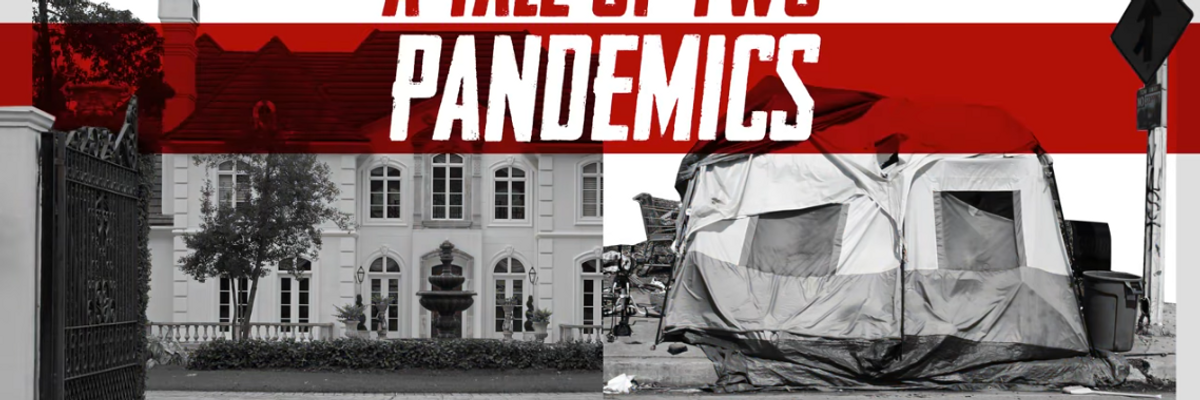No description of the coronavirus is more misleading than calling it "the great equalizer."
The horrific truth is that Native Americans, Latinos, and African-Americans are dying at much higher rates than white people.
The horrific truth is that Native Americans, Latinos, and African-Americans are dying at much higher rates than white people--and we don't know the half of it because the CDC hasn't released any racial data about the virus; we don't know if they're even collecting it.
But the picture emerging from cities, states, and reservations is that of an atrocity.
In Milwaukee County, black people make up just 26% of the county's population but account for almost half the county's cases, and a staggering 81% of its deaths.
Louisiana, Illinois, and Michigan are no different: black people make up less of the overall population, but account for vastly more of both cases and deaths.
In San Francisco, Latinos account for just 15% of the population but make up 31% of the city's confirmed cases, and account for over 80% of the city's hospitalized coronavirus patients. And in the country's epicenter of New York City, the virus is twice as deadly for Latinos as for white people.
Native Americans are also dying in wildly disproportionate numbers. The Navajo Nation, with about 175,000 residents, has more cases of COVID-19 than nine entire states. And more deaths than 13 states.
You've heard how governors are fighting over aid? Well, tribal leaders are getting even less.
So why are these communities suffering the worst of this pandemic?
For one, black people and Latinos are more likely to work in "essential" positions that require them to put their health at risk--a study by the New York City comptroller found that 75% of the city's frontline workers are people of color.
On top of that, black people and Native Americans experience higher levels of preexisting conditions like asthma and diabetes that make contracting the virus more deadly.
Of course they don't just happen to have these illnesses--this is the system: it's decades of segregated housing, pollution, lack of access to medical care, and poverty in action.
But the virus isn't just discriminating by race. It's also disproportionately affecting the working class and poor of every kind.
In New York City, the five ZIP codes with the highest rates of positive tests for the coronavirus have an average per capita income of *under* $30,000--while residents in the five zip codes with the lowest rates have an average income of over $100,000.
And that's just where there's testing. Remember how early on we heard about celebrities testing positive? If not happiness, at least money can buy a diagnosis. New York just rounded its death toll up by a few thousand people who were never even tested.
Studies show that lower-income people are more likely to have chronic health conditions that make the virus more deadly.
They're less likely to receive sufficient medical care or might lack access altogether.
And they're more likely to work in frontline "essential" jobs that put their health at risk.
A study found that only 3% of lower income workers are working from home during the pandemic, compared to almost half of upper middle income workers.
Any rush to "open the economy" is really about forcing working class and poor people back into harm's way while the rich and affluent can safely work from home.
For as many workers risking their lives for meager paychecks, still more are now unemployed and on the brink of financial obliteration.
Less than half of Americans can afford a $1,000 emergency, and nearly 75% live paycheck to paycheck. Piecemeal unemployment benefits and one-time payments aren't going to buoy Americans through the next great depression.
We are all weathering the same storm, but we are not all in the same boat.
Systematic inequality in America has produced two very different pandemics:
In one, billionaires are sheltering in place on their yachts in the Caribbean, and wealthy families are safely quarantining in multimillion-dollar mansions.
In the other boats sit people risking their lives for their jobs and people without incomes going hungry, a disproportionate number of whom are people of color, and all of whom deserve better.
This is a tale of two pandemics. There is nothing "equal" about it.
Watch:

